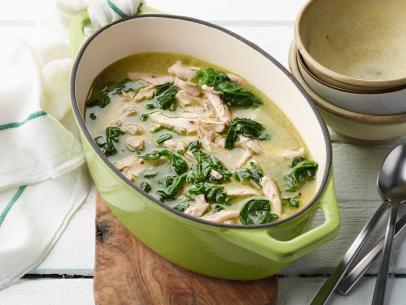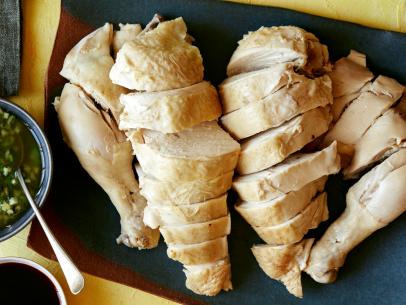
Recipe courtesy of Paul Berglund
Recipe courtesy of Paul Berglund
Watch how to make this recipe.
Sumac Roast Chicken
Getting reviews...
- Level: Intermediate
- Total: 5 hr 55 min
- Active: 25 min
- Yield: 4 servings
-
- Nutritional Analysis
- Per Serving
- Serving Size
- 1 of 4 servings
- Calories
- 508
- Total Fat
- 35 g
- Saturated Fat
- 10 g
- Carbohydrates
- 2 g
- Dietary Fiber
- 1 g
- Sugar
- 0 g
- Protein
- 43 g
- Cholesterol
- 173 mg
- Sodium
- 800 mg
Sumac has a lemony, savory flavor, perfect for complementing roast chicken. It may be hard for some to find it (or forage it) fresh, but dried sumac, which is what this recipe calls for, is a fine replacement. Plus, learn Chef Berglund’s tricks for crisping chicken skin in the oven!
- Level: Intermediate
- Total: 5 hr 55 min
- Active: 25 min
- Yield: 4 servings
-
- Nutritional Analysis
- Per Serving
- Serving Size
- 1 of 4 servings
- Calories
- 508
- Total Fat
- 35 g
- Saturated Fat
- 10 g
- Carbohydrates
- 2 g
- Dietary Fiber
- 1 g
- Sugar
- 0 g
- Protein
- 43 g
- Cholesterol
- 173 mg
- Sodium
- 800 mg
Ingredients
Directions
- Preparation: Lay the chicken breast side up. Being careful not to tear the skin, separate it from the flesh by easing your finger underneath the skin. Gently work your fingers as far up the breast meat as you can, then as far down the legs as you can. (This separation will allow for crisper skin during roasting.) Then dry the chicken thoroughly with paper towels.
- Seasoning: Salt the chicken all over, lightly on the wings and heavier on the breasts, legs, and thighs. Sprinkle about ½ teaspoon inside the cavity. Then liberally season the chicken all over with sumac in an even layer, sprinkling some inside the cavity as well. Liberally grind pepper over the chicken. Refrigerate, uncovered, for 3 hours. After 3 hours, remove chicken from the refrigerator and allow it to come to room temperature, 1 hour. Meanwhile, preheat the oven to 450 degrees F.
- Roasting: Thoroughly dry the chicken again with paper towels, inside and out. Twist and tuck the wing tips under the chicken for even cooking. Over high heat, preheat a cast-iron skillet that is just big enough for the chicken to fit in. If you don’t have cast-iron, use a heavy-bottomed stainless steel pan. (If you’re using stainless steel, add a bit of vegetable oil to the pan right before adding the chicken.) When the skillet is very hot, turn heat to medium and add the chicken, breast side down. Turn heat back to high and cook for about 30 seconds; then place the skillet in the oven. Cook for 30 minutes. (Total roasting time will be about 1 hour.)
- Resting: After 30 minutes, remove skillet from the oven. Use tongs and a meat fork to flip the chicken over so it is breast side up. Place back in the oven and cook for another 25–30 minutes, or until a thermometer inserted into the middle of the breast reads 150–155 degrees F. (Note: Chef Berglund prefers his chicken slightly under the USDA-recommended temperature of 165 degrees F. The temperature will continue to rise a bit as the chicken rests after roasting.) Remove chicken from the pan and let rest before carving, breast side up and loosely covered with aluminum foil, 30-35 minutes.
- Carving: Slice the skin between each leg and breast to loosen the leg portions, but allow them to stay attached. Turn the cavity away from you; then slice alongside either side of the breast plate to the joint between the wing and the carcass. Remove the breast and wing on one side, then the other. Flip the chicken over, cut around the leg and thigh, and remove. Repeat with the other leg and thigh. (Optional: Cut the leg and thigh into two pieces, then cut each breast into two pieces.) Arrange on a serving platter and serve immediately.

































